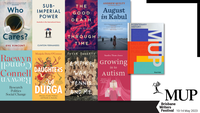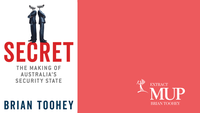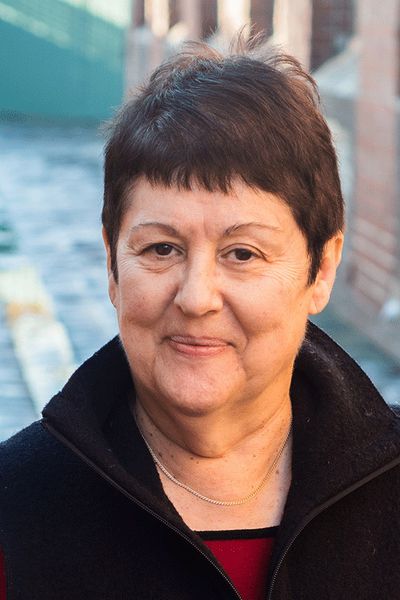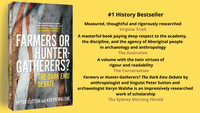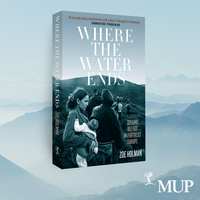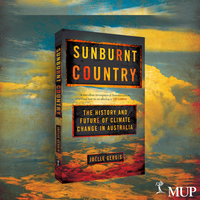Read Janet McCalman's chapter from WHAT HAPPENS NEXT?
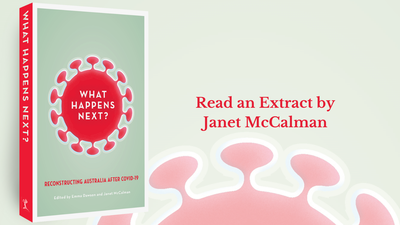
What Happens Next? sets out a progressive, reforming agenda to tackle the twin crises of climate change and inequality. It provides a framework through which our collective effort can be devoted to improving the lives of all Australians, and the sustainability of the world in which we live.
It’s Possible
Professor Janet McCalman AC
In 1945, Europe lay in ruins. Eighty-five million people had perished, most of them civilians, deliberately murdered by starvation or industrial slaughter or burnt alive in their torched villages or fire-bombed cities. Sixty million people were displaced and took to the roads. Polish Jews who went home to find if anyone had survived were attacked and murdered. The total of lost or orphaned children has never been tallied. The 1944–45 winter had been terrible, crops had not been planted and there was no food. Only the Russians seemed to know how to ration food and rebuild civil society: the other Allies were at a loss.
Civil society had been destroyed by oppression, cruelty and hunger. Scarcely any civilian who survived occupation ended the war with a clear conscience. People had to kill, steal, lie, inform on neighbours, refuse to help when asked, fail to fight when needed. And at the end, they had nothing. They amounted to millions upon millions of destitute, damaged people. A friend’s mother who spent the war in Trieste once admitted that there was no human depravity she had not witnessed.
Not only had the physical world been consumed by fire, so also had institutions, communities and infrastructure. Yet out of the carnage, modern Europe and the Soviet Union rebuilt their cities and homes and their civil societies. If the European Union and the former Eastern Bloc have problems now, their flourishing since 1945 has been a miracle. All have experienced a dramatic improvement in living standards in the past three-quarters of a century. [i]
When this pandemic crisis ends, things will be very bad for those with weak, corrupt and incompetent governments. For those with good governments, critical moral decisions will be required: do we reinvest and rebuild positively, or do we inflict austerity to pay down the debt quickly? The deaths will be proportionately fewer than in World War II, the buildings won’t be smashed, nor the sewers, water pipes and gas pipes shattered. Physically the world will still be there, the hospitals and schools ready to open for normal business. Farms will still be producing food except where severe weather has destroyed crops. The shock and grief will be awful, and it will be the world’s turning point between collapse or recovery towards a new resilience.
Our first historical question is: how did the Allies pay for the war after the impoverishment of the Great Depression? JM Keynes’ 1940 book How to Pay for the War outlined a program of rationing, war bonds and currency creation that could produce the funds without generating inflation.[ii] But the minute the war ended, 42 per cent of the British workforce was made redundant.
So how did the Allies pay for the peace without a return to the misery and chaos that were experienced after World War I? Rationing and austerity continued, but governments did not stop spending. The new Labour government in the United Kingdom passed legislation mandating full employment; the existing Labor government in Australia in May 1945, just as the Nazis surrendered and before the war ended with Japan, issued its famous white paper, written by Dr HC Coombs. Its title was simply Full Employment in Australia. [iii] We pre-empted the British, but we were of like mind.
Australia, by comparison, got off lightly from World War II. And Australia also had arguably the best government in its history under prime ministers Curtin and Chifley. They believed in the social contract that government was there to serve the people; that our Commonwealth was formed for the ‘common good’. They were great internationalists. They prosecuted the war, but they also committed from 1943 to building a better Australia for the people who had sacrificed so much to win the war.
Their postwar reconstruction scheme, in just four years of war and four years of peace, established a welfare state and addressed historic injustices to Indigenous people who came under Commonwealth laws. They legislated to mandate full employment after the war, despite the demobilisation of the military and of war industries—and it worked. They reformed the economy from the factory to the farm: General Motors-Holden, the Snowy Mountains Scheme and, this time, soldier settlements that were better planned and more successful. They invested in national and international air travel. They trained hundreds of thousands of unskilled workers to be skilled workers, and sent ex-service people to university. They opened Australia to non- British migration, changing us forever.
They lost office before they could implement Professor Sam Wadham’s massive Rural Reconstruction Scheme. But they also believed that the future depended on education and research, establishing our first research university, the Australian National University, to be a Princeton in the Pacific.[iv] They inaugurated Commonwealth Scholarships and research funding. Our first PhDs began to graduate, and our academic gaze turned away from Oxbridge towards our Asian neighbours for the first time. They invested in the CSIRO. Another term of office may have delivered a national health service. We had to wait almost another forty years for Medicare, but the four years after the war set up modern Australia. [v]
This story is important to retell because it gives us hope—and a model. We need national reconstruction again: to transition to renewable energy, to restore fairness and security to our economy, to rebuild our rural and regional sectors that are beset by poverty, environmental stress and long-time marginalisation.———————————————————————————————————————————————————————————————————
[i] Tony Judt, Postwar: A History of Europe since 1945, Penguin Press, New York, 2005.
[ii] JM Keynes, How to Pay for the War, 1940. https://archive.org/stream/in.ernet.dli.2015.499597?ui=embed#page/n79/mode/2up?ui=embed
[iii] Parliament of Australia, Full Employment in Australia, Government Printer, Canberra, 1945.
[iv] Stephen Foster & Margaret Varghese, The Making of the Australian National University, ANU E Press, Canberra, 2009.
[v] Stuart Macintyre, Australia’s Boldest Experiment: War and Reconstruction in the 1940s, NewSouth Publishing, Sydney, 2015.
This is and edited extract from WHAT HAPPENS NEXT? edited by Emma Dawson and Janet McCalman. Available now.
